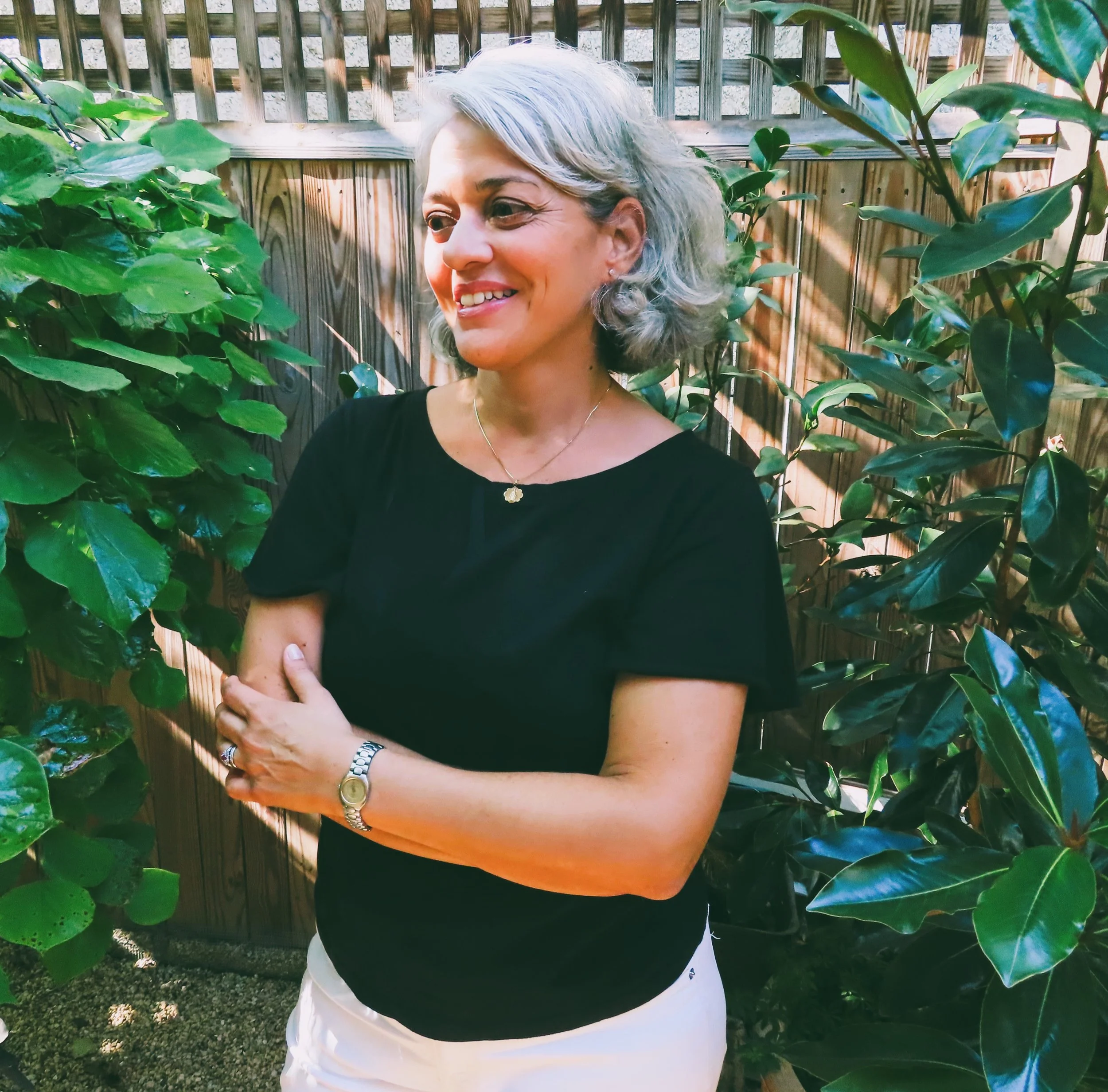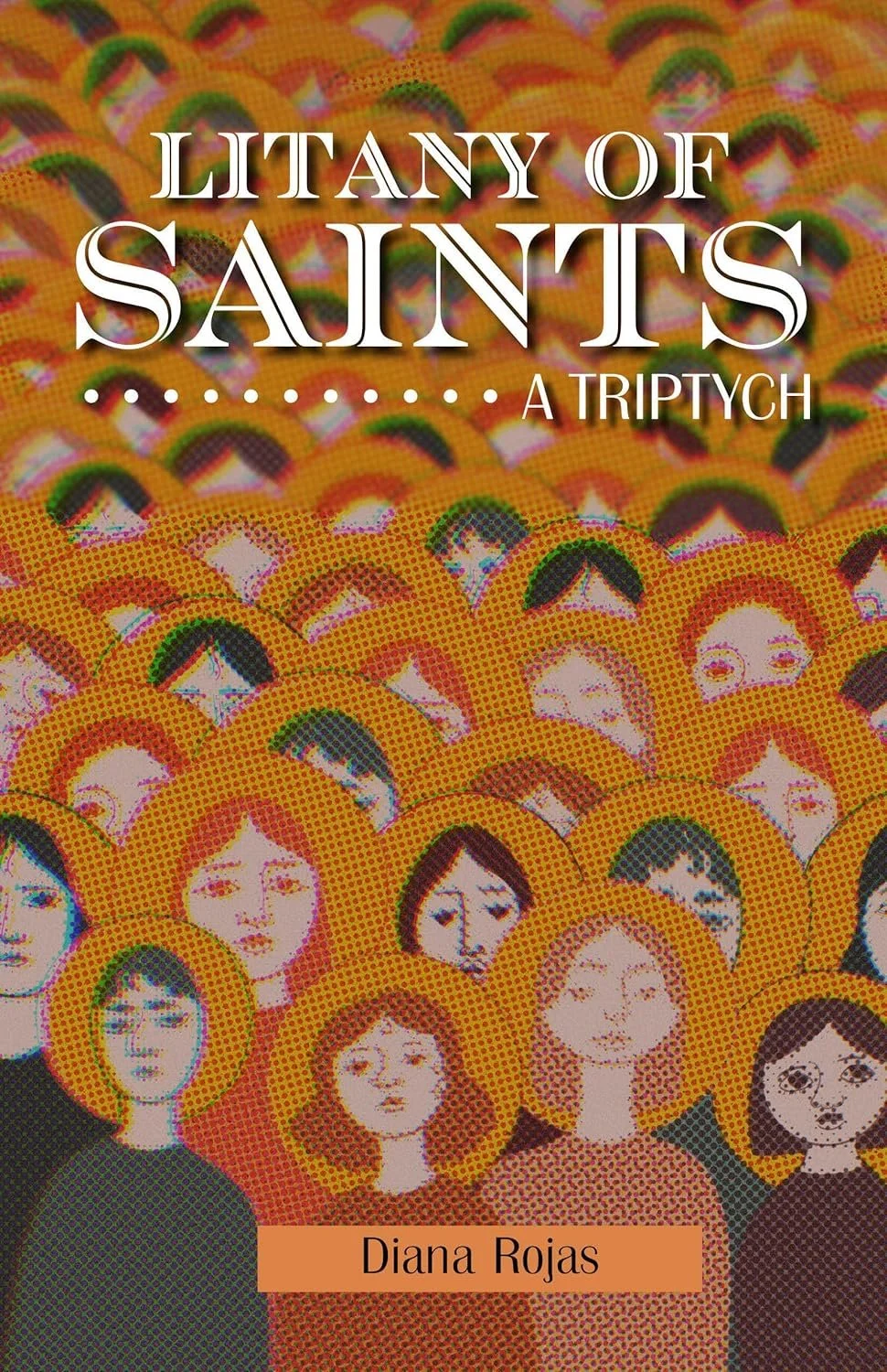Machismo and Marianismo: Feminism and Identity in Diana Rojas’ Litany of Saints: A Triptych
Headshot provided by courtesy of the author.
Grab your copy of Litany of Saints: A Triptych by Diana Rojas here.
Merron Douglas: I always feel like the conception of the novel is a good place to start. It truly varies from writer to writer when that first inspiration hits, so I’m curious as to how Litany of Saints came to you.
Diana Rojas: Well, I wanted to write a memoir of immigration. I'm American born, but my family came from Costa Rica in the 1960s. When they immigrated, they bought a house—an old Victorian house—that they chopped up into three different apartments—you know, throw an extra wall up here, an extra room up here. And when I was a reporter in the 90s, I was given the beat of the town that my family came to. I went to a municipal council meeting, and somebody made a comment about how immigrants ruined their housing stock.
And I thought about the house that my family had settled in, and I thought yeah, they did kind of ruin that house. They had this beautiful Victorian house, and they just completely chopped it up. And at that time, in the 90s, I told my relatives as such. And they said, “Well, we didn't think we were ruining it. We were living out the American Dream.”
So, I pitched that to my editor, and he said, “Absolutely not, you will not write that story. That will engender bigotry.” I told him that, in these stereotypes that the immigrants are ruining the housing, there's a story. And the story is… yeah, we put down shag carpeting, but we grew up with packed dirt floors. This is progress.
Well, they said no. Fast forward many years, and I decide I'm not going to be a journalist anymore, but I'm going to write this story as a memoir. It had been nearly 30 years since I had conceived of it, so I went to interview my living uncles and aunts.
They all told me a different story. Each one of them were telling me different things. I knew somebody was misremembering, but I didn’t want to be the arbiter of the truth, and the truth of the truth is that they were all telling me their real story. We humans make stories up.
So, I ditched that idea, because I felt well, it was the idea that all stories are stories, whether we call them truth or not, right? So, I could write a story, make up 99.9% of the elements, take a little bit from each person, and there would still be some truth in there.
So, I said, screw it, I’m going to write fiction for the first time ever.
MD: That’s fascinating. I feel like that’s so true—that everything truly just boils down a story, that there’s truth in every fiction.
My next question is on the order in which these stories appear. I was wondering if it was something you oscillated on, or did you know from the collection’s conception that they were going to be in this order, starting with “The Lives of Saints” and ending with “La Familia?”
DR: Actually, the order in which they appear is the order in which I wrote them, and I insisted they stay that way. Nobody fought me on it, thankfully. I started with the first one, and when I was roughly 10 pages in, I thought, ooh, wouldn’t it be great if the next story was about sexism? Then, immediately after that, I decided that the last one had to be about politics, because I thought that was the three heads of Latin America—we have religion, machismo, and politics. They all speak to each other. I needed religion to go first, because religion would dictate why we treat women the way we do. And then that would dictate what happens in a society when you want to throw out these conservative ideals—what happens when change happens? And all of the sudden, we’re faced with the last novella, which is people trying to change their world.
MD: I like that—religion, machismo, and politics as the foundation for this novel. As you know, So To Speak is an intersectional feminist journal. I felt that the second story in particular really spoke to our message as a journal and the experience that, unfortunately, a lot of women have dealt with thematically, if not to the exact. When the second story came to you, was the idea of how to portray sexism in flux, or was how it was written what you had in mind?
DR: Now, that was the hardest story to write. Part of it was because I was fighting myself. And yeah—machismo mostly, because it is sexism but it's more of a pervasive societal way of looking at the book. Machismo marianismo, the opposite, right? You have machismo, where men are superior, and then you have marianismo, where women are the fonts of virtue. And that’s to be protected. Overprotected, right? We constrain women in order to protect this societal view. And I thought, what better way to tell that story than through a comedic telenovela.
And let me tell you that the only tiny bit of auto fiction in this is that I was boy crazy all my life. I was born and raised in the US, but I moved to Costa Rica when I was 11 for shy of three years. And there, my older sisters and I became “boy crazy” and it was honestly a lot of fun. We had a very soft landing, I should say. This story is not us. But people cautioned us all the time, “watch your reputations.” Some people thought that by virtue of being Americans, we must be easy. I was 12 and 13.
So, I started out jokingly about the girls being catcalled, and bickering with each other, and we can laugh because it's ludicrous. But when I sat and contemplated the story, I started thinking about all the girls whose stories I had heard, all the cautionary tales of people retelling the disgrace of another woman. And that’s how we learned not to do that. And if it did happen, if something happened to you, or if you were dumb enough to let something happen to you, you never told anybody. That shame was yours, and it was a hidden thing. So, as I was writing that story, I decided that I can’t keep laughing at this, because it was never funny. I decided to write it as an homage to all the girls, including the ones that I might have gossiped about myself. It was a difficult thing to write.
MD: I can imagine so. Reading just that second story, it feels so authentic to the experience of women, just in general and throughout history.
DR: Do we have time for me to tell you a little story?
MD: Absolutely!
DR: When I was a teenager, I went to an all-girls catholic high school. It was quite conservative. I didn't hate it. I was actually trying to be religious at the time. My senior year, Sister Irene Henry had this brilliant idea that we girls should be taught our own anatomy. That we should be taught what, in essence, was natural family planning under the guise of learning our cycles. So here we are at this age, 18, most of us either wanting to become sexually active or actually sexually active. It’s the 80s, so there wasn’t much access to free birth control.
So we’re being taught this, and you never saw a classroom of girls more diligent with their homework, which is tracking our cycles, so we would know when we were fertile or not. Nobody got anything less than an A in that class.
Now, the text for that class was this book called The Good News About Sex, and it was a treatise on abstinence. Somewhere in that book, and I don’t know if these words are exact or if they were just spoken to us, but it said, “always carry this book with you, because if it should get hot and heavy, girls, you reach into your purse and you hand it to them. Because, girls, if the boy gets too hot and heavy and is unable to control his passions, it’s your fault. Because women, as the font of virtue, are the near occasion of sin, and we can either uplift or bring down.” That's how I graduated high school . You were either a slut, or you're Mary incarnate, and you were gonna save the world.
MD: That’s devastating. Though, it makes me thankful that we do have more options now—contraception, and I even went to a high school where we were taught something other than abstinence, which I think is so important.
Talking of women and their struggles made me think of Ruth and that first story. I was very taken with her. I could just see the struggle within her when it comes to wanting things for herself and also dealing with the pressure of being a wife and being a woman. I would love to hear you talk about her.
DR: I love Ruth. She’s every woman of my mom's generation, and even some of my generation. There’s this passivity, and anthropologically, you know, women are the keepers of the hearth, right?
By that, I don't mean that we just always have to cook and clean. But, anthropologically, a lot of culture comes through women. And so sometimes, you see some cultures that treat women harshly. And we could argue men may have made the rules, but the enforcers are women. We are enforcing this. We're passing this on. And so—Ruth. She’s my qualms with that. Why do we pass on, as women, cultures or bad habits? Bad things we don’t even enjoy? Here she is being raised in this conservative patriarchy, being taught that as a woman, her opinion, her desires, her dreams are so much inferior to the men in her life. And so I squish her in between a man who has these really idealistic views of what goodness is and they're strictures, really. That's on one side of her. That's one rock. The rock on the other side is live and let live, lady. I'm gonna live anyway I want to, regardless of your desires. In that channel that she's in, she's going to be beaten against both rocks. She has to navigate her life through that. That’s the way I created the two men. I thought that I couldn't tell her story without fleshing them out. And I don't know if you love them or you hate them.
MD: A bit of both, honestly. I felt like they were sympathetic in a sense of where I could understand them, but it didn't necessarily lead to my enjoyment or liking of them. Her being caught between them is so compelling. When it wasn’t her husband, it was her older brother. And it’s sad that her free will is so limited by these two forces.
DR: But is it? Sometimes, I wanted to take her and I'm like, God damn it, you stupid woman. Can I shape you? What’s wrong with you? And why don't you just do what you want to do?
MD: When she had that phone call with her sister, where she was like, “I'm going to go, I'm going to leave” and then it just doesn't happen. It’s so heart wrenching.
DR: I wanted you, the reader, to wonder, would it have ever happened? Would it have? When you start looking at how she’s lived her life, would she have had the guts? Honestly—do any of us have the guts to radically change our lives?
Note: This conversation was edited for length and clarity.
Diana Rojas’ debut fiction Litany of Saints: A Triptych was published by Arte Público Press in April 2024. A graduate of New York University, she has written in everything from large daily newspapers to niche newsletters. Diana grew up in Connecticut and New Jersey, has lived in five different countries and currently lives, taxed and unrepresented, in Washington, DC. Additionally, Diana is doing a reading in Arlington, Virginia on Saturday, February 8. You can purchase Litany of Saints: A Triptych here.
Merron Douglas is a fiction writer and third-year MFA candidate at George Mason University. Her work has previously been published in CC&D Magazine and Common House Magazine. You can find her on Twitter @merrondouglas or holed up in the back of your local coffee shop.


